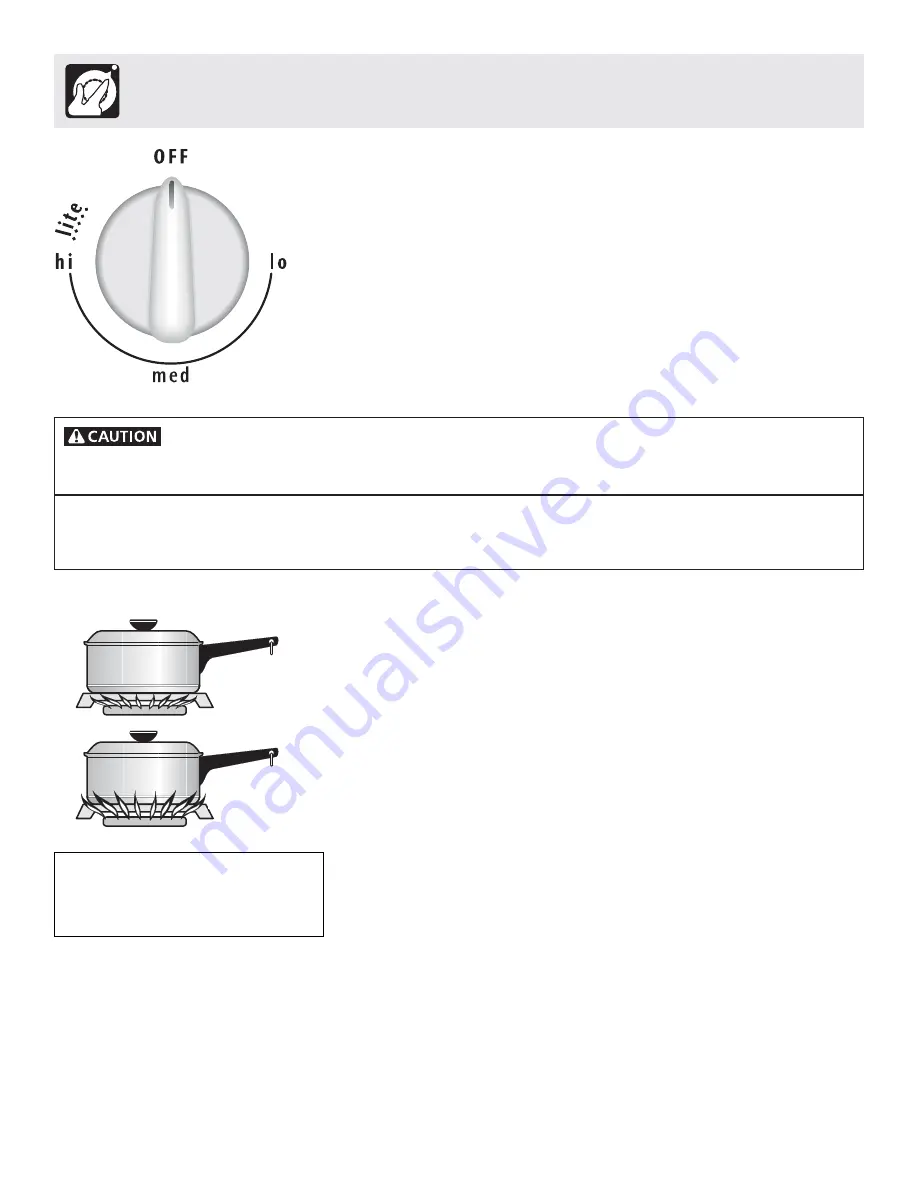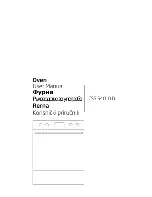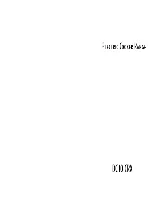
8
Setting Surface Controls
Operating the Gas Surface Controls:
1.
Place cooking utensil on surface burner.
2.
Push the surface control knob down and turn
counterclockwise
out of the OFF
position.
3.
Release the knob and rotate to the LITE position (see figure 1). Note: All four
electronic surface ignitors will spark at the same time. However, only the burner you
are turning on will ignite.
4.
Visually check that the burner has a flame.
5.
Turn the control knob
counterclockwise
to the desired flame size. The control
knobs do not have to be set at a particular setting. Use the knob indicator settings
to adjust the flame as needed.
DO NOT
cook with the surface control knob in the
LITE position. (The electronic ignitor will continue to spark if the knob is left in the
LITE position.)
Do not place plastic items such as salt and pepper shakers, spoon holders or plastic wrappings on
top of the range when it is in use.
These items could melt or ignite. Potholders, towels or wood spoons could catch fire
if placed too close to a flame.
In the event of an electrical power outage, the surface burners can be lit manually. To light a surface burner, hold a lit match
to the burner head, then slowly turn the surface control knob to
LITE
. After burner lights turn the knob to desired setting. Use
caution when lighting surface burners manually.
Figure 1
Setting Proper Surface Burner Flame Size
For most cooking
- start on the highest control setting and then turn to a lower
one to complete the process. Use the recommendations below as a guide for
determining proper flame size for various types of cooking. The size and type of
utensil used and the amount of food being cooked will influence the setting
needed.
*Flame Size
Type of Cooking
High Flame
Start most foods; bring water to a boil; pan broiling.
Medium Flame
Maintain a slow boil; thicken sauces, gravies; steaming.
Low Flame
Keep foods cooking; poach; stewing.
For deep fat frying
- use a thermometer and adjust the surface control knob
accordingly. If the fat is too cool, the food will absorb the fat and be greasy. If the
fat is too hot, the food will brown so quickly that the center will be undercooked.
Do not attempt to deep fat fry too much food at once as the food will neither brown
nor cook properly.
*Note: Settings are based on using medium-weight metal or aluminum
pans. Settings may vary when using other types of pans.
The color of the
flame is the key to proper burner adjustment. A good flame is clear, blue and hardly
visible in a well-lighted room. Each cone of flame should be steady and sharp.
Adjust or clean burner if flame is yellow-orange.
Never extend the flame beyond the outer
edge of the utensil. A higher flame simply
wastes heat and energy, and increases
the risk of being burned by the gas flame.
RIGHT
WRONG
Incorrect
Correct
Figure 2








































